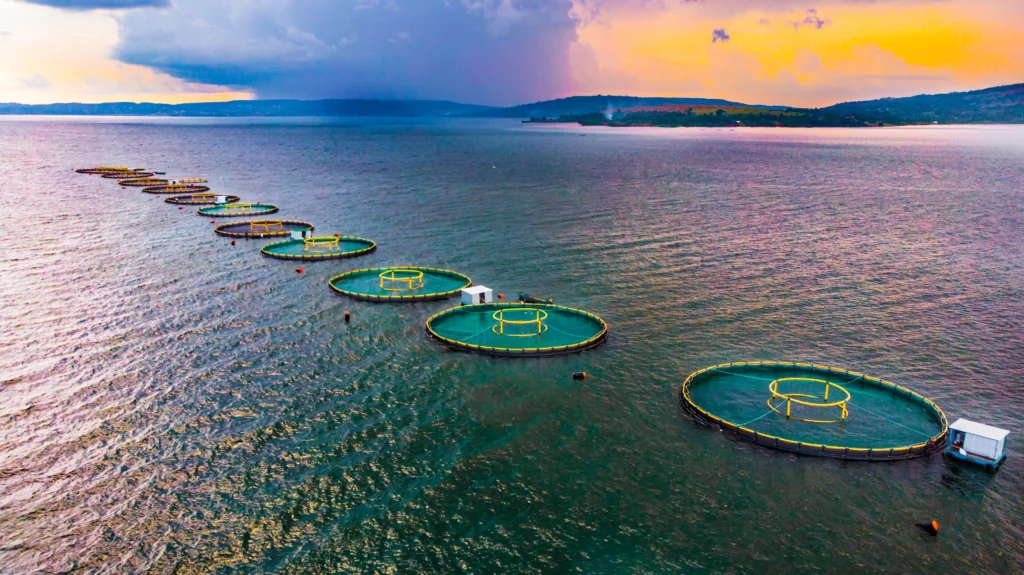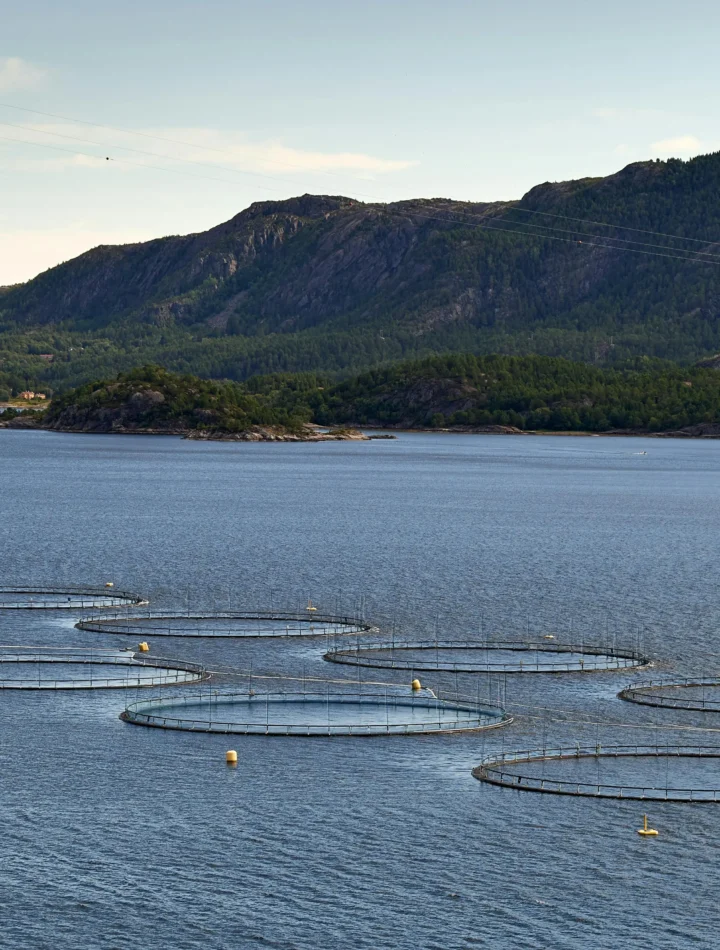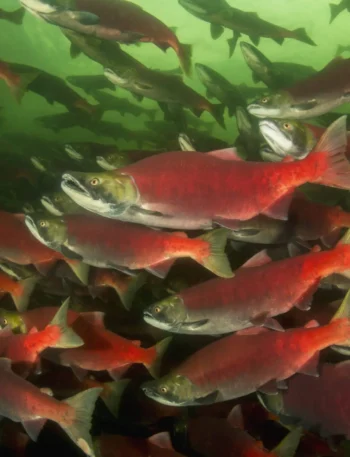Salmon farming, often referred to as aquaculture, is the practice of breeding and raising salmon in controlled environments. This method helps meet the increasing global demand for salmon while ensuring a consistent supply of this popular fish.
What is salmon farming? In freshwater systems, fry (young salmon) are initially raised in tanks where farmers can closely monitor water quality, temperature, and nutrition. Once they reach a certain size, the salmon are transferred to saltwater pens or cages that simulate natural ocean conditions, allowing them to grow until they reach market size. However, salmon farming faces environmental challenges. High-density farming can impact local ecosystems due to waste and uneaten feed accumulation. Disease management is also a concern, as it can lead to outbreaks requiring antibiotics or treatments that could affect surrounding wildlife.
How Salmon Farming Works
What is salmon farming? begins in hatcheries, where fertilized eggs hatch into fry. The fry are raised in freshwater tanks before being moved to saltwater enclosures to mature. Mature salmon are picked, processed, and packaged for distribution after 18 months to 3 years of growth, all while maintaining fish health and environmental regulations.
Eggs: Salmon farming begins with collecting fertilized eggs from wild or farmed salmon, which are incubated in hatcheries until they develop into fry. Once the fry grow, they are transferred to freshwater tanks, then moved to saltwater environments to mature. After reaching market size, the salmon are harvested, processed, and sold to consumers.
Growing: After hatching, the fry are moved to freshwater aquariums to grow for several months. Once they reach a specific size, they are transferred to saltwater pens or cages, where they continue to grow until reaching market size.
Ready to Eat:When salmon reach maturity, they are harvested and processed for sale, ensuring freshness and nutrition for consumers. Their vibrant colors, influenced by species and diet, enhance market appeal. For instance, sockeye salmon is known for its deep red hue, while Atlantic salmon is typically light pink to orange. Sustainable farming practices also promote responsible feeding that maintains these appealing colors.

Why do we farm salmon?
What is salmon farming? meets the rising global demand for seafood while providing a sustainable protein source. It creates jobs in coastal areas but requires sustainable practices to address environmental challenges..
More Food: With a growing global demand for seafood, salmon aquaculture provides a consistent source of protein. Salmon varieties display a range of colors, which can vary depending on the species, diet, and habitat.
Jobs: Additionally, the salmon industry generates countless jobs in aquaculture, processing, and distribution, benefiting local economies. This employment boost contributes significantly to community development and economic stability in regions where salmon farming and processing are prevalent.
Environmental Impact
While salmon aquaculture offers advantages, it can also be harmful to the environment. Issues include pollution from waste and chemicals, habitat degradation, and the transmission of diseases to wild fish populations. These factors can disrupt local ecosystems and threaten the sustainability of both farmed and wild salmon.
Future of Salmon Farming
What is salmon farming? salmon farming emphasizes sustainable innovations like integrated multi-trophic aquaculture and improved feed formulations. These practices aim to minimize environmental impacts while meeting global demand. Additionally, advancements in technology will enhance fish welfare and production efficiency.
Conclusion
Salmon farming is critical for food and employment creation, but it must strike a balance between economic rewards and environmental sustainability to thrive in the future. By adopting responsible practices and innovative technologies, the industry can ensure the health of ecosystems while meeting the growing demand for this popular fish. Sustainable salmon farming not only supports local economies but also contributes to global food security, making it an essential component of the modern food system.





